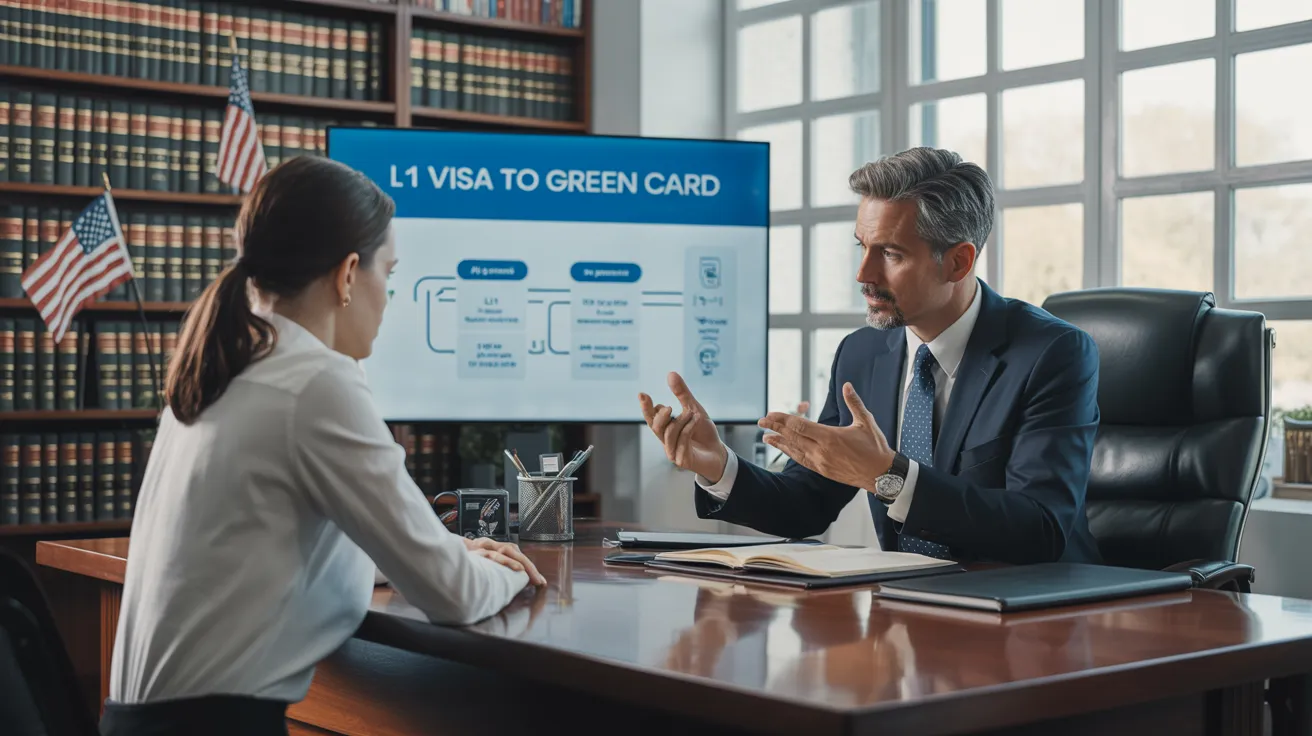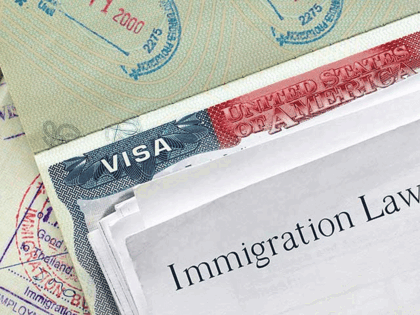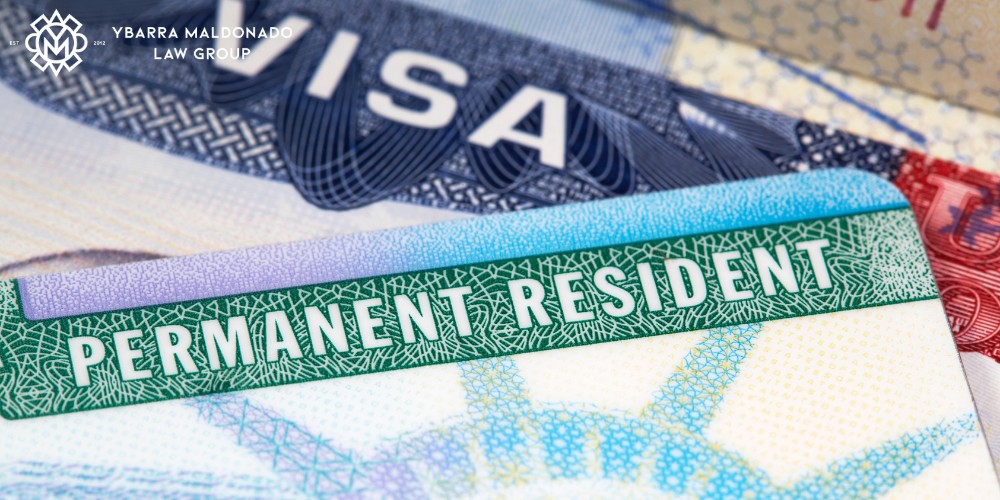Unlocking Opportunities: A Comprehensive Guide to the L1 Visa Process
The L1 visa process offers a crucial pathway for international business looking for to move key staff members throughout borders. Understanding the subtleties of eligibility standards, the differences between L-1A and L-1B visas, and the details of the application procedure can considerably influence a candidate's success. Navigating this complicated landscape is not without its difficulties, and careful attention to documentation and employer sponsorship is vital. As we explore the essential parts of this procedure, the strategies for overcoming potential barriers will become evident, disclosing just how educated preparation can open up a globe of opportunities.
Understanding the L1 Visa
Recognizing the L1 visa requires recognizing its value as a vital tool for multinational business looking for to transfer experienced employees in between global workplaces. This non-immigrant visa classification assists in the movement of execs, supervisors, and specialized knowledge employees to the United States, consequently enabling companies to maintain functional connection and harness global skill successfully. The L1 visa is split into two main categories: L-1A for managers and execs, and L-1B for workers having specialized knowledge.The L1 visa offers a vital duty in enhancing a business's one-upmanship in the worldwide market. By permitting business to move their essential personnel, organizations can ensure that important tasks are handled by qualified individuals who are currently accustomed to the company's society and functional procedures. L1 Visa. This inner transfer mechanism not only promotes knowledge sharing however also advertises innovation and cooperation across borders.Moreover, the L1 visa is frequently favored for its fairly uncomplicated application procedure compared to other visa classifications, as it permits dual intent, permitting owners to seek long-term residency while on a temporary copyright. This attribute makes the L1 visa especially appealing for both employers and staff members, as it enhances the path for proficient specialists to develop long-lasting residency in the USA
Eligibility Requirements
Eligibility for the L1 visa rests on a number of key standards that guarantee both the worker and the company fulfill particular qualifications. This non-immigrant visa is designed for international business to transfer workers from consular services to U.S. counterparts.Firstly, the company should be a qualifying company, which includes a parent firm, branch, affiliate, or subsidiary of a united state company. The firm must have been doing organization for a minimum of one year both in the united state and abroad. This assures that the business has sufficient functional security and a legitimate presence.Secondly, the employee has to hold a managerial, exec, or specialized understanding placement. For L1A visas, the applicant has to show supervisory or executive certifications, while L1B visas concentrate on specialized understanding pertaining to the organization's items, services, or processes. Furthermore, the staff member must have functioned for the foreign entity for at least one continuous year within the last three years before their application.Lastly, the worker's duty in the united state have to line up with their previous position, making certain that their abilities and know-how are leveraged for the company's benefit.

Sorts Of L1 Visas
The L1 visa group consists of two key kinds made to promote the transfer of staff members within multinational business: the L1A visa for managers and executives, and the L1B visa for staff members with specialized understanding. Each kind offers distinctive functions and has specific eligibility criteria.The L1A visa is tailored for individuals that hold supervisory or executive placements within a firm. This visa allows high-level staff members to transfer to a united state branch, subsidiary, or associate of the exact same organization. Applicants for the L1A visa have to show that they have actually been used in a managerial or executive ability for at the very least one continuous year within the previous 3 years before their application. Additionally, this visa uses a longer duration of remain, initially granted for 3 years, with the possibility of expansions for approximately seven years.In comparison, the L1B visa is planned for specialists with specialized understanding related to the company's items, services, or processes. To qualify, candidates have to prove that their competence is essential to the organization which they have actually benefited at least one continuous year within the last three years in a duty that required this specialized understanding. The L1B visa is at first approved for 3 years, with extensions readily available for approximately 5 years.Both visa kinds are vital for companies looking for to boost their global operations by leveraging proficient workers, thus advertising innovation and performance within the U.S. market.
Application Process
Guiding via the L1 copyright procedure includes a number of vital actions that must be meticulously followed to guarantee an effective end result. The process starts with the united state company, that have to initially develop eligibility by demonstrating a qualifying relationship with the foreign entity and confirming that the worker fulfills the specific needs for the L1 visa category being sought.Once qualification is confirmed, the employer starts the process by filing Kind I-129, the Application for a Nonimmigrant Worker, with the U.S. Citizenship and Migration Solutions (USCIS) This form must be gone along with by a thorough summary of the task obligations to be done, the business framework of both the united state and foreign entities, and the staff member's certifications. It's essential to confirm that all details is exact and total, as noninclusions or inaccuracies can bring about delays or denials.Upon authorization of the I-129 application, the next step involves the employee applying for the L1 visa at a united state embassy or consulate in their home country. This stage requires the completion of Type DS-160, the Online Nonimmigrant copyright, and arranging a meeting. Throughout the meeting, the candidate has to offer proof supporting their credentials and the employer's petition.After the visa is approved, the worker can enter the United States to operate in the assigned role. On the whole, mindful preparation and adherence to every step of the application procedure are important for a successful L1 visa outcome.
Needed Paperwork

Important Kinds Required
Navigating the L1 Visa process calls for careful interest to the crucial types and documentation necessary for an effective application. The key kind required is the Type I-129, Request for a Nonimmigrant Worker, which need to be finished and submitted by the U.S. employer (L1 Visa Requirements). This type outlines the details of the employment deal and the credentials of the worker looking for the L1 Visa.Alongside Kind I-129, the applicant will require to full Form I-539 if accompanying household members are also obtaining visas. Furthermore, the company has to give evidence of the certifying connection in between the U.S. entity and the international entity, usually demanding the submission of corporate files such as articles of unification or financial statements.Moreover, it is vital to consist of the L Classification read more Supplement to Type I-129, which specifies the kind of L Visa being requested-- either L-1A for supervisors and executives or L-1B for staff members with specialized knowledge. Finally, applicants ought to assure that all types are signed and dated suitably, as insufficient submissions can result in delays or denials. Properly constructing these essential kinds lays the foundation for a smoother L1 copyright procedure
Supporting Evidence Requirements
Supporting paperwork is necessary for a successful L1 copyright, as it validates the cases made in the request. Candidates have to give a variety of files to show eligibility for the visa, which is categorized into two key kinds: proof of the qualifying connection in between the U.S. and international entities and proof of the applicant's qualifications.To establish the partnership, applicants need to submit paperwork such as corporate business graphes, economic declarations, and proof of ownership. These papers confirm that the international business has a certifying relationship with the united state company, whether as a parent business, subsidiary, branch, or affiliate.For the applicant's qualifications, necessary files include a comprehensive employment letter from the foreign company, detailing the applicant's work title, tasks, and duration of work. Additionally, academic qualifications, such as degrees and diplomas, must be offered to prove the candidate's expertise in the appropriate field.
Employer Sponsorship Records
Company sponsorship files play an essential function in the L1 copyright process, as they verify the united state employer's commitment to the applicant's employment in the USA. These files are vital for demonstrating the company's qualification to sponsor the applicant for the L1 Visa.Key papers normally needed consist of an in-depth employment letter from the U.S. employer, which lays out the task title, responsibilities, and the nature of the employment connection. Additionally, the company must give evidence of the company's authenticity, such as organization licenses, income tax return, and organizational graphes, illustrating the connection in between the U.S. entity and the international company.Furthermore, proof of the worker's certifying connection with the foreign company is required. This may consist of paperwork evidencing the worker's role in the international entity, such as pay stubs, employment agreement, or performance evaluations.
Common Difficulties
Maneuvering the L1 visa process offers a number of usual challenges that candidates must understand (L1 Visa). Key problems frequently consist of rigid documents needs, possible hold-ups in processing times, and the need for rigorous lawful conformity. Comprehending these barriers can aid applicants better prepare and reduce threats throughout their copyright trip
Documents Demands
The L1 copyright procedure frequently provides substantial difficulties connected to documentation needs. Applicants must supply considerable paperwork to establish qualification, which can bring about complication and potential delays. Key papers include evidence of a certifying connection in between the U.S. and foreign employer, proof of the candidate's work history, and comprehensive details concerning the work function in the U.S.One typical obstacle is gathering adequate proof to show the nature of the certifying partnership. Business typically struggle to present clear organizational graphes or monetary statements that highlight the connection between the entities. On top of that, making sure that letters of assistance from companies precisely show the applicant's task obligations and credentials is crucial, as obscure summaries can cause denials.Another problem occurs from the demand for comprehensive job summaries that line up with the L1 visa classifications. Applicants should verbalize not only their current duty however also their supervisory or specific understanding responsibilities plainly. This requires a comprehensive understanding of both the candidate's placement and the regulatory language used in L1 applications.
Handling Dead Time
Experiencing hold-ups in processing times is a common obstacle encountered by L1 visa applicants, usually leading to irritation and unpredictability. Numerous aspects add to these delays, including high application volumes, boosted scrutiny of applications, and management stockpiles within the united state Citizenship and Migration Provider (USCIS) Candidates may discover that handling times can vary greatly depending upon the solution facility managing their application, as each facility has its own workload and efficiency levels. In addition, the complexity of the candidate's case, such as the requirement for extensive documents or information, can additionally extend wait times.In some instances, problems associated with the candidate's existing migration standing or previous visa background may likewise bring about added hold-ups, as USCIS might call for additional review or details. It is necessary for prospects to remain proactive throughout this duration, keeping open communication with their employers and legal representatives to attend to any kind of possible issues promptly.Understanding these processing time difficulties can assist L1 visa candidates prepare for feasible delays and alleviate the impact on their shift and career strategies. Patience and persistance are vital merits in steering this detailed procedure.
Lawful Conformity Issues
Lots of L1 visa applicants come across legal conformity issues that can complicate their trip toward getting the visa. Recognizing and sticking to the certain laws set by the U.S. Citizenship and Migration Services (USCIS) is important. Common difficulties include showing the certifying connection between the international and united state employers, along with proving that the applicant has the requisite specialized understanding or supervisory capacity.Additionally, applicants should offer comprehensive documentation describing their task responsibilities, business structure, and financial feasibility of the united state entity. Inadequate or inaccurate documentation can lead to hold-ups or perhaps rejections. Employers need to also ensure that they adhere to labor regulations, including wage and functioning condition criteria, which can affect visa eligibility.Another usual issue involves maintaining conformity with the regards to the visa when approved. Adjustments in employment condition, task duties, or business framework can require changes to the visa, which otherwise attended to without delay can bring about lawful problems. As an outcome, remaining notified regarding compliance needs and seeking lawful advise when necessary is important to navigate the complexities of the L1 visa process successfully.
Tips for Success
Success in the L1 copyright procedure commonly pivots on careful preparation and interest to information. To boost your possibilities of authorization, start by extensively recognizing the eligibility requirements for both the L1A and L1B visa groups. Examine whether your position at the company qualifies as managerial, exec, or specialized knowledge, as this classification especially impacts your application.Next, gather substantial paperwork that validates your cases. This includes organizational graphes, detailed task descriptions, and proof of the business's operational structure. Clear and succinct evidence of the certifying relationship between the U.S. entity and the foreign entity is essential. Verify that all documents are organized practically and provided in a professional way, as this mirrors your commitment and seriousness regarding the application.Engage the solutions of a seasoned migration lawyer who concentrates on L1 visas. Their know-how can prove very useful, leading you through complicated laws and ensuring that all documents abides with current laws. In addition, prepare for the meeting by practicing solution to typical inquiries and preparing to discuss your duty and payments to the firm detailed.
Often Asked Concerns
Can Family Members Members Go Along With the L1 Visa Owner?
Yes, household participants of L1 visa holders, consisting of partners and single kids under 21, can come with the primary visa holder. They may also request L2 visas, which enable them to stay in the United States.
Just How Lengthy Can I Keep on an L1 Visa?
The L1 visa enables initial stays of as much as 3 years, with the possibility of expansion. L1A visa holders might remain for a maximum of seven years, while L1B visa owners can stay for 5 years.
Can L1 Visa Owners Apply for a Permit?
Yes, L1 visa holders can request a permit. They might go after irreversible residency with employment-based classifications, generally calling for sponsorship from their company, provided they meet the essential certifications and documents requirements.
What Occurs if My L1 copyright Is Rejected?
If your L1 copyright is refuted, you may obtain a notification describing the reasons for rejection. You can seek to appeal the decision, reapply, or check out different visa choices based upon your situations.
Exist Any Type Of Traveling Limitations With an L1 Visa?
An L1 visa typically allows for international traveling; nevertheless, re-entry to the U.S. L1 Visa Requirements. rests upon maintaining legitimate standing. Tourists ought to ensure conformity with visa problems to stay clear of complications upon return
Conclusion
